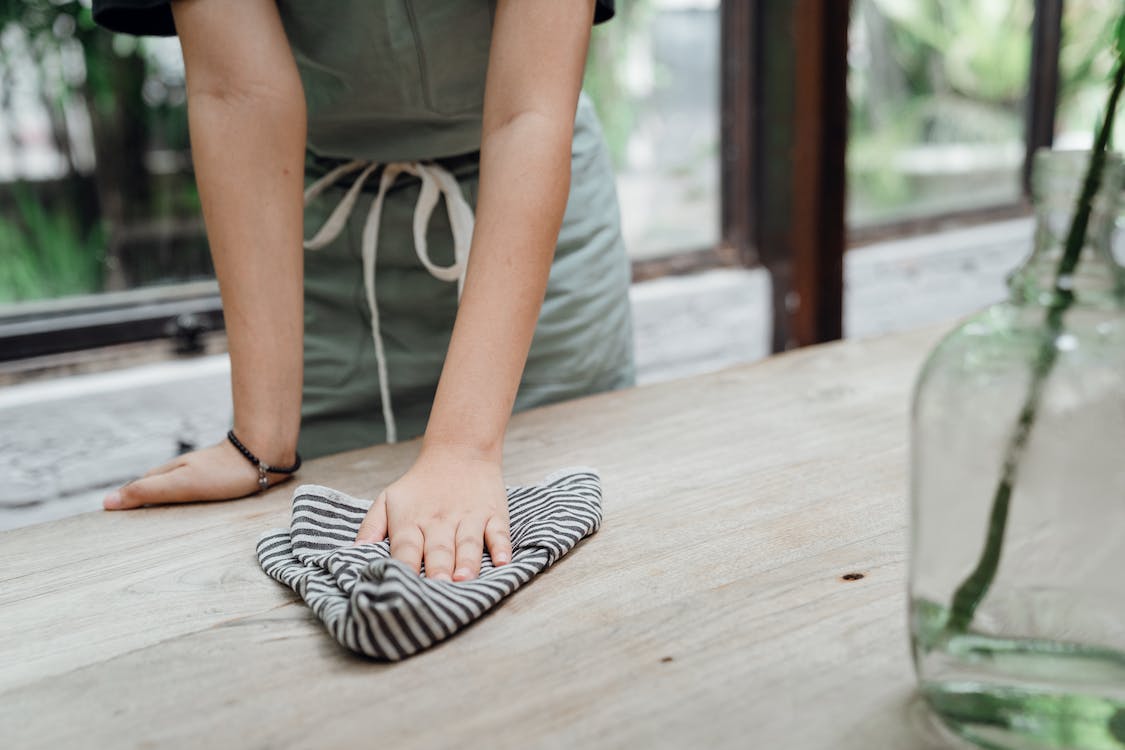Opening and Closing Checklists for Quick-Serve Restaurants
As the busiest restaurant types, owners of quick-serve establishments must always stay organized and on top of things. By implementing opening and closing checklists in your restaurant, you and your staff members will always be prepared for the busy day ahead.
By listing and numbering each item on a checklist, you can clearly see which tasks have been completed or still need attention. Before opening and closing for business each day, all employees should read the checklist to ensure everyone is on the same page.
With correctly implemented checklists, you can reduce human error, speed up the time it takes to complete a task, and decrease your overall costs of restaurant operations. Additionally, by creating a standard set of opening/closing procedures for your quick-serve business, you make it easy to train new employees and prepare them for the challenges that come with the job.

Benefits of Implementing Opening and Checklists
Some restaurant owners might not place much value on completing opening/closing procedures each day. However, these simple steps can deliver a whole host of benefits.
- No task is forgotten: the mere act of codifying and listing daily tasks ensures that no matter how big or small the task is, it will be completed as outlined. No detail gets overlooked, and no task is left undone at the end of the day. Having a list also makes it easier to communicate between employees and managers about what needs to get done in a quick-serve setting.
- Lower labor costs and increased productivity: with a written list of tasks to complete daily, you can assign responsibilities to employees based on their skill set and experience level, thereby lowering labor costs and increasing employee productivity. Having clear guidelines for your employees to follow will minimize the need for constant supervision while on the job and increase their overall job satisfaction.
- Free up management time for other important tasks: by taking care of smaller day-to-day details ahead of time, you'll be able to spend more time working on other important aspects of your business, such as marketing and customer outreach.
- Increased security: with a comprehensive checklist of daily tasks to complete before opening the business each morning and closing each evening, you'll ensure that your staff is diligent about maintaining your establishment's security. You'll also have documentation that can be used in the event of an incident to show what steps were taken to keep your property safe at all times.
- Happier customers: happy employees equal happy customers! Happy employees are more likely to deliver excellent customer service, resulting in higher customer satisfaction scores and more repeat business for your restaurant.
- Increased accountability: by clearly outlining each employee's responsibilities, you can hold employees accountable for following through with their assigned duties and ensuring everything is done properly.
So what are some important things to remember when creating your checklists? Here are some important aspects to keep in mind when developing your own checklist templates for your quick-serve restaurant operation.

Considerations When Creating your Opening and Closing Checklists
So now you understand why checklists are so important, let's quickly run through the things you need to keep in mind when drawing up the opening and closing checklists for your quick-serve restaurant business:
List Everything, No Matter How Insignificant it May Seem
List every task that needs to be completed before opening the restaurant in the morning or closing it at night. This may seem like a long list at first, but don't worry — breaking it down into specific categories will make it more manageable. For example, under “Prepare for Opening,” you might list tasks such as ordering food and supplies for the day ahead, making menu changes, and preparing the kitchen stations for that day's service.
Assign Tasks to Specific Teams or Individuals
For each task listed, assign an owner and/or responsible party for each job to be completed. This way, everyone knows who is responsible for what at the end of the day. Usually, the best way to split up the task list is into three categories, Front of House, Back of House (kitchen), and Management/Administrative duties.
Give Employees Enough Time to Complete Each Task
Give employees realistic windows to complete their assigned tasks before moving on to the next task on the list. This will help prevent bottlenecks, ease pressure on staff, and allow team members to check off the tasks without feeling the need to cut corners or rush through the list.

Prioritize Cleaning and Sanitation
It should almost go without saying, but it's absolutely essential that your quick-serve restaurant is always clean and sanitary. Cleaning your restaurant should be one of the top priorities on your checklist as it's one of the most important factors of customer satisfaction. Make sure that all cleaning supplies are fully stocked and ready to go before you open your business each morning, and keep sanitation a top priority throughout your day.
Leverage Technology Wherever Possible
To keep time spent completing each task to a minimum, try using technology whenever it makes sense. For example, quick-serve restaurant owners should use the restaurant management software that's included with quick-serve restaurant POS solutions to help reduce time spent on routine tasks like tracking daily inventory, orders, and payment totals. You can also use the real-time data analytics within the software to tweak your checklist to reflect the items that need to be taken care of based on past sales patterns.
With these considerations out of the way, let's provide you with some example opening and closing checklists to get you started.
Opening Checklists for a Quick-Serve Restaurant
So without further ado, here is an example set of opening and closing checklists for your quick-serve restaurant. Of course, your specific tasks may differ from what's listed here depending on the size of your restaurant, your particular restaurant setup, and the number of team members you have on hand.
Opening Checklist - Front of House
- Turn on lights and music.
- Turn on your POS system.
- Sign in to mark the beginning of the shift.
- Refill receipt paper.
- Take count of any money in the register.
- Sweep or vacuum floors.
- Remove chairs from tabletops and position them neatly around tables.
- Stock stations with paper towels, plastic cutlery, and other supplies you need to serve customers.
- Test drive-thru equipment, including headsets and speakers, to ensure customers can hear and be heard clearly.
- Ensure bathrooms have been cleaned and restocked with essentials, like soap and toilet paper.
- Clean and sanitize all open surfaces, including tables, chairs, serving counters, restroom door handles, and any other surface that comes into contact with customers.
- Flip the sign on your door from “Closed” to “Open.”
Opening Checklist - Back of House
- Sign in to the POS system to mark the beginning of shift.
- Clean and sanitize all cooking surfaces and equipment.
- Turn on equipment and machinery at each kitchen station and preheat them, ready for opening.
- Check stock levels of all items required for that day's menu, including any condiments or sauces you need during the shift.
- Check freezers and refrigerators for any perishable items that need to be thrown out or used as soon as possible to avoid spoiling.
- Throw out any out-of-date or damaged products immediately.
- Deal with deliveries of supplies as soon as they arrive.
- Conduct a pre-shift inspection of each kitchen station to identify any potential issues that might arise during service.
- Remove tools and kitchen utensils from storage and place them back into their designated areas in the kitchen, so they're available when needed during service.
Opening Checklist - Management
- Check inventory levels using reports from your POS system to ensure there's enough stock to serve your customers efficiently throughout the day without running out unexpectedly.
- Check previous sales data to forecast how busy you expect to be throughout the day and adjust staffing accordingly to ensure that you have the right amount of staff on hand.
- Check for any incoming deliveries of fresh products and ensure your kitchen team has everything they need for the day's service.
- Monitor the allocated staff levels to ensure no one is working too many hours; assign extra staff to cover any gaps in coverage as necessary.
- Monitor marketing program performance and note any trends that might affect business performance today or in the future.
Closing Checklist - Front of House
- Clean restrooms thoroughly to make sure they're ready for the next shift.
- Clean and sanitize all tables and chairs before placing chairs on the tables.
- Mop the floor and vacuum if necessary.
- Cash up the register(s), top up the receipt printer, and turn off all POS equipment (including handheld POS devices) at the end of the day.
- Do a security sweep, ensuring you've secured the premises before leaving for the night.
- Flip the sign on your door from “Open” to “Closed.”
- Sign out on the POS system to signify the end of your shift.
- Turn off the lights.
- Set the alarm or security system.
- Empty trash cans and refill them with new trash bags.
Closing Checklist - Back of House
- Turn off all appliances and machinery at each station, unplug appliances where possible, and ensure the power is turned off at the mains.
- Clean the kitchen thoroughly, including all appliances, sinks, counters, floors, windows, etc.
- Correctly discard all food waste, including oil and water left in fryers and broilers at the night's end.
- Check stock levels and make a note of any items that need to be replaced as soon as possible.
- Ensure refrigerators and freezers are set to the correct temperatures and are locked to prevent tampering or theft.
- Stow away kitchen utensils and other portable items securely in their designated storage areas.
- Sign out on the POS system to signify the end of your shift.
Closing Checklist - Management
- Check actual sales against expected sales for the day to determine if you're on track to reach your goals for the week/month.
- Check staffing levels and make any adjustments necessary to ensure that you're meeting your labor budget requirements.
- Monitor inventory levels via your POS system and note items needing to be reordered immediately or later that week/month.
- Assess the impact of promotions and marketing campaigns on business performance and adjust plans as necessary to reach business goals for the month/year.
Get On Top of Your Daily Quick-Serve Restaurant Tasks with POSTRON
Ensuring you stay on top of the daily quick-serve restaurant tasks that keep your operation running smoothly is essential for your restaurant's long-term success and profitability.
A cloud-based POS system like POSTRON can help you streamline your operations and keep your daily operations organized and efficient, so your staff can focus on providing quality customer service. With staffing schedules, inventory tracking, and real-time sales data at your fingertips, you can make intelligent business decisions and track your progress toward goals and targets.
To learn more about how POSTRON can help streamline your quick-serve restaurant operations and boost your bottom line, contact us today for a personalized demo.



